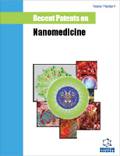Abstract
The clinical success of using liposomes to deliver chemotherapeutics to cancer cells has made them particularly attractive candidates for future work involving improved nanocarrier-based drug delivery. Encapsulation of cytotoxic agents within these vesicles can decrease the unintended deleterious side effects of commonly used chemotherapeutics, and can allow for improved pharmacological properties by altering drug pharmacokinetics and biodistribution. While there are many advantages associated with using liposomal-based drugs, a particularly important disadvantage involves poor drug transfer from the nanocarrier to tumor cells within the tumor site. Therefore, current work involves the design of liposomes that contain a triggered release mechanism in order to facilitate drug escape. While there have been many methods that have previously been used to accomplish this, this review mainly discusses approaches that involve molecules added to liposomal-formulations that respond to radiation, changes in pH, or increased temperature. This short review also discusses the recent patents on liposomal-based chemotherapeutics designed to release their contents based on these principles. Furthermore, we discuss the possibility of using a combinatorial approach involving the potential use of these liposomal-based formulations along with tumor-associated stromal-depleting drugs.
Keywords: Cancer, chemotherapy, cytotoxic agents, drug carriers, drug delivery, liposomes, nanocarriers, nanoparticles, triggered release mechanisms
 15
15

